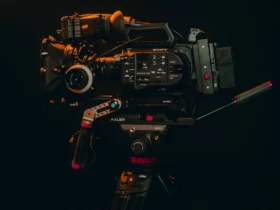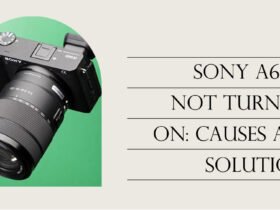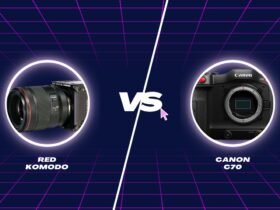Is your Fujifilm Instax Mini 11 not working? You’re not alone! The Instax Mini 11 has been my trusty companion for capturing life’s beautiful moments with its sleek design and user-friendly features. However, like any tech enthusiast, I’ve had my fair share of hiccups along the way.
In this blog post, I’ll draw upon my personal expertise and experiences to guide you through the most common problems that Instax Mini 11 users encounter. Together, we’ll troubleshoot these issues step by step, so you can have your camera back in action without delay. We’re covering everything, from battery and film quirks to finicky ejection mechanisms. Plus, I’ll throw in some additional common problems I’ve encountered while using the Fujifilm Instax Mini 11, so don’t skip those!
So, grab your Instax Mini 11, and let’s embark on a troubleshooting journey into Fujifilm Instax Mini 11 together!
Fujifilm Instax Mini 11 Not Working: Issues and Solutions
Now we’ll be discussing frequent issues that users encounter with their Fujifilm Instax Mini 11 cameras and how to fix them.
1. Incorrect Battery Placement and Battery Life.
We’re starting with a common but easily avoidable mistake: incorrect battery placement. When you insert the batteries into your Instax Mini 11 correctly, a light on the camera will illuminate as soon as you power it on. This light is essential for proper camera operation. If you find that the light is not turning on or is blinking, it’s time to double-check your batteries. A blinking light usually indicates that the batteries are too weak, and it’s time to replace them with fresh ones.

Remember always to pay close attention to the orientation of the batteries when inserting them, as this can make all the difference in getting your camera to work correctly. Both the batteries have opposite orientations in the holder, so make sure to double-check it.
2. Corrosion On The Battery Holder End Plates.
One thing I’ve learned from my experience with the Fujifilm Instax Mini 11 is that we often overlook a sneaky culprit behind malfunctions: corrosion on the battery holder end plates. Understanding how this issue arises and dealing with it is crucial for keeping your camera in top shape.
Corrosion sneaks in when those metal end plates of the battery holder have an unfortunate encounter with moisture or other corrosive substances. Over time, this can cause the metal to deteriorate. The more corrosion builds up, the more it messes with the electrical connections between your batteries and the camera. Ultimately, this can result in your beloved Instax Mini 11 acting up or not working altogether. So, it’s a problem worth addressing!
To avoid this problem, it’s essential to keep your camera and its battery compartment clean and dry. If you notice any signs of corrosion on the battery holder end plates, gently clean them with a soft cloth or cotton swab dampened with a small amount of isopropyl alcohol. Allow the end plates to dry completely before reinserting the batteries and closing the battery compartment.
3. Using Non-Alkaline Batteries Can Lead To Fujifilm Instax Mini 11 Not Working.
Another factor that can lead to your Fujifilm Instax Mini 11 not working is the use of non-alkaline batteries. The Instax Mini 11 is specifically designed to work with alkaline batteries from the same brand. And using batteries that don’t meet this requirement can result in suboptimal performance or even failure.

Non-alkaline batteries, such as zinc-carbon or rechargeable nickel-metal hydride (NiMH) batteries, typically have lower voltage outputs and a shorter lifespan compared to alkaline batteries. As a result, they may not provide the consistent power required for the proper functioning of your Instax Mini 11.
Using non-alkaline batteries in your camera can lead to various issues, such as inconsistent flash performance, slower shutter speeds, or even a complete inability to power on the camera. To ensure the best performance and reliability, always use alkaline batteries from the same brand in your Instax Mini 11.
4. Physical Damage To Your Fujifilm Instax Mini 11 Can Lead To Its Not Working.
In my journey with the Fujifilm Instax Mini 11, I’ve learned that accidents can sometimes disrupt the camera’s smooth operation. Whether it’s a sudden fall or an unfortunate encounter with a hard surface, physical damage can take a toll on its internal components, leading to malfunctions or complete failure.
If you suspect that your trusty Instax Mini 11 has endured some rough treatment, here’s a trick I’ve picked up along the way: try a soft reset. Start by turning the camera on, remove the batteries, and promptly reinsert them. This simple action can sometimes work wonders by resetting the camera’s internal systems and potentially resolving minor issues caused by the impact.
However, please be aware that this method won’t work for more severe damage or issues affecting the camera’s internal components. If your Instax Mini 11 remains unresponsive after the reset attempt, it’s wise to reach out to Fujifilm’s customer support or pay a visit to an authorized repair centre for a professional assessment and necessary repairs. Your camera deserves the best care possible!
Also Read: Samsung T5 vs T7, Best SSD For Video Editing
5. Water Damage and Humidity Can Be A Cause Of Your Fujifilm Instax Mini 11 Not Working.
Water damage and high humidity can also lead to your Fujifilm Instax Mini 11 not working as intended. Like most electronic devices, the Instax Mini 11 can’t withstand water exposure or prolonged exposure to high levels of humidity. These conditions can cause internal components to corrode, short-circuit, or malfunction, ultimately preventing the camera from functioning properly.
To prevent water damage or humidity-related issues, it’s important to always keep your Instax Mini 11 in a dry and protected environment. Avoid using the camera in rainy or excessively humid conditions. And if your camera does get wet, immediately turn it off and remove the batteries. Allow the camera to dry completely before attempting to use it again.

If you suspect that your camera has been exposed to water or high humidity and it’s not working. It’s best to consult Fujifilm customer support or an authorized repair centre for further assistance. Attempting to fix the camera on your own may void the warranty or cause additional damage.
Now, we will look into some additional issues which you might face with FujiFilm Instax Mini 11 along with their solutions.
Also Read: Is Polaroid 600 Worth It In 2023? Guide & Review
Some Other Issues With FujiFilm Instax Mini 11 and Their Solutions
1. Forgetting to Eject the “Dark Slide”
The most common issue that many Instax Mini 11 users face is forgetting to eject the “dark slide.” The dark slide is a black plastic cover that protects the film from being exposed to light when you first load a new film cartridge into the camera. If you don’t remove it properly, your first photo will be ruined.
To avoid this mistake, make sure to follow these steps when loading a new film pack into your camera:
- Locate the yellow dots on the film pack and the camera.
- Align the yellow dots on the film pack with those on the camera, and insert the pack gently.
- Turn on the camera by opening the lens.
- Press the shutter button to eject the dark slide.
By following these steps, you’ll ensure that the first photo you take with your new film pack won’t be wasted.
2. Accidentally Touching the Lens
From my own experiences with the Instax Mini 11, I’ve come across another common hiccup that users often encounter: accidentally brushing against the lens while snapping pictures. It’s a real mood-killer when it happens because this innocent touch can result in the camera’s light going kaput, rendering it incapable of capturing that perfect shot. Even a gentle nudge can wreak havoc on your photos, introducing unwanted dark shadows at the top and bottom of your cherished memories. So, it’s crucial to be mindful of those delicate lenses while you’re in your photographic groove!

An example of this can be seen in a photo where the lens was deliberately touched while taking the picture. The resulting image has noticeable black bars along the top and bottom edges. To avoid this issue, be cautious when handling your camera and make a conscious effort not to touch the lens while taking photos.
3. Taking Selfie Without Using “Selfie On”
Another common issue that users face is taking close-up shots without using the built-in selfie function. The camera’s default setting is not designed for very close range, which can result in blurry or out-of-focus images. To capture sharp close-up shots, you’ll need to enable the selfie function.

Activating the selfie function is easy. Simply pull out the lens of your Instax Mini 11, and the camera will adjust its focus for close-range photography. By using this feature, you can ensure that your close-up photos will come out clear and well-focused.
4. Not Turning Selfie Function Off
The next common mistake is the opposite of the previous one: leaving the selfie function on while taking regular photos. If you’re capturing images of landscapes or subjects far away, you don’t want the selfie function enabled. It can result in out-of-focus pictures.
This issue often arises when users take a selfie. They activate the selfie function by pulling out the lens and may forget to deactivate it when switching to a different type of shot. To turn off the selfie function, simply power off the camera and then turn it back on. The lens will automatically retract, and the camera will return to its default focus settings.
5. Taking Photos in Low-Light Conditions
The fifth common mistake users make with their Instax Mini 11 is attempting to take photos in extremely low-light conditions. While Instax cameras are a lot of fun, they are not designed for capturing images in very dark environments, especially the Instax Mini 11.
Certain models, such as the Instax Mini 90, have a bulb function that can help with nighttime photography. However, if you try to take a picture in a poorly lit area with the Instax Mini 11, the flash may not reach your subject. This can result in dark and underexposed photos.


For example, a photo taken of a city at night with the Instax Mini 11 may turn out almost entirely black, with only a few bright spots visible. In contrast, a photo captured with a modern smartphone, like an iPhone, would likely produce a much better result in the same lighting conditions.
6. Taking Photos In Excessively Bright Conditions
Through my experience with the Instax Mini 11, I’ve noticed a common error: snapping photos in overly bright conditions. While it may seem counterintuitive—more light usually improves photos—Instax cameras can falter in excessive brightness. This challenge extends to most Instax models due to the film’s sensitivity at ISO 800.
The Instax Mini 11 comes with a relatively fixed aperture and a maximum shutter speed of 1/400 of a second, which limits its capacity to handle extremely bright scenarios. In comparison, modern smartphones like iPhones boast much higher maximum shutter speeds (around 1/16,000 of a second), enabling them to handle a wide range of lighting conditions with ease.
To steer clear of washed-out images, it’s a good idea to refrain from taking photos with your Instax Mini 11 when the sun is blazing. But if you’re determined to capture a shot in bright conditions, you can get a bit creative. One experimental approach I’ve tried is using sunglasses to cover the lens temporarily, reducing the amount of blinding light entering the camera. It’s not a perfect fix, but it can be a handy trick in a pinch!
7. Opening The Film Door Before All The Film Has Been Used Up
The tenth common mistake that users make with their Instax Mini 11 is opening the film door before all the film has been used up. If you accidentally open the film door and see that there are still sheets of film inside, don’t panic! While the top sheet of film will certainly be wasted, the remaining sheets might still be usable.
The front sheet of the film acts as a shield, protecting the sheets behind it from exposure to light. So, if there is more than one sheet left in the cartridge, the chances are that the other sheets are still okay to use.
8. Neglecting To Pay Attention To The Film Counter
The final common mistake that users make with their Instax Mini 11 is neglecting to pay attention to the film counter. When you load a new pack of film, the counter will display 10, indicating the number of shots available. With each photo taken, the counter will decrease by one until it reaches zero.

To avoid disappointment, it’s crucial to keep an eye on the film counter. You wouldn’t want to gather your friends for a perfect photo opportunity, only to discover that you’re out of the film when you press the shutter button and nothing comes out.
Also Read: 7 Tips For Making The Best Colorist Showreel
In this blog, I aimed to empower you with knowledge about common Instax Mini 11 issues and their solutions. I truly hope that you’ve found the solution you were seeking if your Fujifilm Instax Mini 11 was not working. By staying informed about these potential stumbling blocks and learning how to sidestep them, you’re now equipped to embark on a journey of capturing unforgettable memories with your Instax Mini 11 camera!












Got a Question?
Find us on Socials or Contact us and we’ll get back to you as soon as possible.